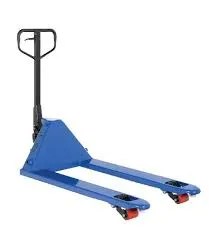


Understanding Lever Hoist Blocks A Comprehensive Guide
Lever hoist blocks, also known as lever chain hoists, are essential tools in industries that require lifting heavy loads safely and efficiently. These mechanical devices use the principle of leverage to assist operators in lifting, lowering, and securing loads with minimal physical effort. Lever hoist blocks are versatile and reliable tools, making them integral in construction sites, warehouses, and various industrial applications.
How Lever Hoist Blocks Work
At the core of a lever hoist block is a simple yet effective mechanical system. The device typically comprises a lever arm, a ratchet mechanism, a hook for load attachment, and a chain or rope. When the operator pulls the lever down, a series of gears and pulleys work together to lift the attached load. The ratchet mechanism prevents the load from falling back, providing safety and control during operation.
The mechanical advantage offered by the lever mechanism allows operators to lift heavier loads than they could manage with brute strength alone. For instance, a lever hoist can lift a load that is several times heavier than the force applied on the lever, making it an indispensable tool in scenarios where heavy lifting is frequent.
Key Features of Lever Hoist Blocks
1. Portability Lever hoist blocks are lightweight and often come with a compact design, making them easy to transport and handle. This portability allows them to be used in various locations without the need for large machinery.
2. Durability Constructed from high-strength materials, lever hoist blocks are designed to withstand harsh working conditions. Many models are built to resist corrosion and wear, ensuring reliable performance over extended periods.
3. Versatility Lever hoists can be used in various applications, from construction and shipbuilding to automotive repair and warehouse operations. Their ability to handle different types of loads makes them suitable for many tasks.

4. User-Friendly Designed for ease of use, lever hoist blocks often come with intuitive controls that enable quick operation, even for inexperienced users. This ease of use enhances productivity and minimizes the risk of accidents.
5. Safety Features Most lever hoist blocks are equipped with safety features such as overload protection and automatic brake systems. These features help prevent accidents and equipment damage by ensuring that the load remains secure during lifting.
Applications in Various Industries
In construction, lever hoist blocks are commonly used for lifting beams, concrete blocks, and other heavy materials. In warehouses, they assist in loading and unloading goods, making operations more efficient. The automotive industry utilizes lever hoists for lifting engines and components, while shipyards use them for heavy lifting tasks during the assembly and repair of vessels.
Maintenance and Safety Considerations
To ensure longevity and safe operation, regular maintenance of lever hoist blocks is crucial. Users should inspect the hoist for wear and tear, lubricate moving parts, and ensure that the ratchet mechanism functions properly. Additionally, operators should be trained in proper lifting techniques and safety procedures to minimize the risk of injuries.
Conclusion
Lever hoist blocks play a vital role in modern lifting applications across various industries. Their mechanical advantage, durability, and safety features make them essential tools for anyone involved in heavy lifting tasks. Understanding how to operate and maintain these devices effectively can enhance workplace efficiency and safety, ensuring that both operators and loads are secure throughout the lifting process.



